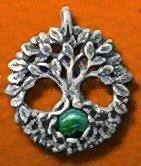These then are the elements common to most Arming rituals. Known variations are discussed below.
1. Trousers. Given to Vinga by Voria in both variants, these
are worn under a blue skirt. Various descriptions of them exist; they are variously described as red, plaid, brown, and blue.
2. Hair. In the Youth ritual Vinga’s hair is left unbound. This is also true of many versions of the War ritual;
in others Vinga cuts her hair and sacrifices it to the wind.
3. Henna/Woad. In clans that believe that Vinga dyed her hair red when she became a warrior, this
section of both rituals involves Vinga being told the secret of infertility by Ernalda, and using a pot of henna to dye her
hair. Most Sartarite clans believe that Vinga’s hair was red before she became a warrior, changed by her anger at Elmal
when he told her to leave the palisade. They do not dye their hair at this stage but instead daub their bodies and faces with
woad (often believed to have been given to Vinga by Babeestor Gor), marking themselves with the sacred runes of the goddess.
4. Spear or Sword.
Vinga equips herself with a weapon borrowed from her father’s Hall. In many clans this weapon is a sword called Death,
in others a spear called Moving Thorn. In at least one Arming ritual she bears the sword Vengeance, made for her by Gustbran
the Smith. Some myths maintain that Humakt gave her a copy of Death, in
return for her aid; others that Vinga was lent Death, and kept a copy for herself when she returned the sword to him.
5. Two javelins. Also taken from her fathers Hall. In most variants of the Arming ritual they are called
No Escape and Last Cast. In some versions Ernalda gives them to Vinga.
6. Shield. Accepted at first, then discarded as too heavy. In some versions Ernalda gives it
to her, in others by Elmal. In at least one ritual detailed in the temple library at Pavis, Vinga is given a second sword
by Eurmal, the origin of her Flashing Blade feat. Its name is recorded as WidowMaker, also known as Doom of Man.
7. Cloak/Scarf. In the Youth ritual, Vinga is given a heavy woollen cloak by Orane, to keep her warm
during the night. In the War ritual, she dons Mist, a fine silk scarf given to her by Huraya.
8. Amulet/Armour. In most versions of the Youth Arming ritual Vinga is given an amulet before she leaves.
Most agree that Enferalda gave her an amulet of strength, but many versions differ (as to both the source and nature of the
gift). In at least one version, Ernalda gives her Boa, to guide and assist her. In the War version, Vinga usually dons her
mail coat, WardWand. The hauberk has several other names, the most common of which are PointBreaker and Earth’s Leaf.
Turn
9. Healers Bag/Sandals. In most versions of the Youth ritual, Bevara gives Vinga a small bag filled with herbs and herbal preparations. In
the War ritual, she dons the Sandals of Darkness, given to her by the Mother of Darkness and brought to her by Voria. Some
variations exist, but this seems a fairly constant element of the Arming ritual.
10. Boots/Horse. In the Youth ritual, Vinga borrows a sturdy pair of boots from Barntar
(some versions say she got them from Ernalda, others that she already had a pair, which Voria fetched for her). In the War
ritual, she gets a horse, brought to her by Redalda (although variants do exist).
11. Clansfolk to re-assure. All variations include a group of clansfolk that Vinga had to reassure.
The size of the group and type of clansfolk is what varies, and tends to be adapted to suit the path being followed anyway.
12. Oath or Boast/Acceptance of the warband. In the Youth ritual, Vinga always swears to accomplish a set goal, or
boasts of her achievements to come. In the War ritual she always has, or obtains (usually via a challenge or speech), the
acceptance of the male members of the warband.
13. Speech to get the support of the women of the clan. In most versions of the Arming ritual, Vinga makes a speech to gain the support of the women
of the clan; this often varies, usually depending on the path being followed. For example, in most versions of the ‘Why
Vingans aren’t Afraid of Trolls” heroquest, part of Vinga’s preparations include making a speech to reassure
the cottars she was protecting.
Many of the versions of the Arming ritual that I know of, mix the order of these elements. Generally this is because
the path of the goddess that is to be followed involves different preparations. Many clans have their own understanding of
the goddess, the continued success of their rituals prove their validity.

